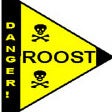
A lot of confusion, mystery, and myth surround the simple question of what grade of fuel to use, what octane ratings mean, what detonation is, and the value of racing fuels. Part of the reason for that is the marketing that oil companies have done for over 70 years, in which they have promoted high octane fuels as an easy avenue to increase performance, when in fact, this is a very much backwards perspective on the matter. It is engines originally built for higher performance that need it. Let’s see if we can clear up some of the misinformation!
Click on to page two where we'll start with "Detonation: what is it?"
Detonation: what is it?
Gasoline engines are designed to burn gasoline. They are not designed to “explode” or detonate it. There’s a huge difference. During normal operation, air and fuel is introduced into the combustion chamber, compressed so as to improve the force of expansion as it burns, then near top dead center, it is ignited by the ignition system. What is supposed to happen is that the fuel immediately adjacent to the spark plug is ignited, and as it burns it ignites the fuel surrounding it and so on outward from there very much like a wave of flame. It’s like making a circle of match heads on top of a table and dropping a lit match in the middle (or anywhere else in the circle). The flame will spread rapidly, but never instantly.
Detonation is different. Detonation is the simultaneous ignition of all of the unburned fuel in the cylinder at the time it occurs, all at once. Normal ignition is a heavy, sudden push that continues over 90 or more degrees of crank rotation; detonation is like hitting the piston with a hammer instead of pushing it, and often has the effect you would expect from doing that kind of thing.
Up next: Why and how does detonation happen?
Why and how does detonation happen?
Detonation occurs when the heat and pressure in the cylinder rise to the point where the gasoline is ignited by just that, and not by contact with a flame. Once that level of heat is reached, it affects all of the fuel that remains to be burned equally and at the same time, rather than progressively, as a flame traveling from droplet to droplet of the fuel mist, and all of it ignites in the same instant, creating insanely high spikes of pressure that can and do cause horrendous damage.
In practice, the causes are one or more of excessive heat in the combustion chamber that allows temperatures to rise too high during compression, timing that is too far advanced, allowing the flame to build too much pressure before it can effectively turn the crank, hot spots in carbon deposits that ignite the fuel early, or simply a fuel the does not have sufficient resistance to being ignited by heat and pressure alone. That is, a fuel with an insufficient octane number.
Most of the time, what happens is that ignition takes place normally, and the flame front begins to spread over the combustion chamber as intended. But, as the flame spreads, heat and pressures in the chamber rise until they reach the point where the fuel can no longer tolerate them, the remaining fuel from the previous intake cycle detonates, often resulting in an audible “ping”. It can produce a sound reminiscent of having filled the top end with marbles or something, and can be quite destructive if it happens early enough in the power stroke. The correction, assuming that the engine is timed and jetted appropriately is to increase the resistance of the gasoline to being ignited by sources other than open flame. That means, a fuel with a high enough octane number.
That’s the form detonation usually takes, and at that level, in which only a part of the whole fuel charge is detonated instead of burned, it isn’t nearly as harmful as it can get. In the extreme, where the gasoline is pre-ignited, that is, ignited earlier than intended by an overheated engine, glowing carbon, etc., a larger percentage, or even all of the fuel may be detonated at once, and the results can be catastrophic.
Up next: What are the factors that influence normal combustion?
What are the factors that influence normal combustion?
Compression, ignition advance, and the fuel’s tolerance of them. Compression is simple to understand. Compression creates heat, and more compression creates more heat. Possibly too much more.
Ignition timing is a little more complicated, but still pretty easy to understand. In a piston engine, there is a mechanical “sweet zone” in the rotation of the crankshaft that goes from just after top dead center (TDC) to around 90 degrees after top dead center (ATDC). In this zone pressure on top of the piston does the most efficient job of turning the crank. It’s also important here to note that throughout this zone of rotation, the combustion chamber volume is constantly expanding. Gasoline of any kind or blend burns at nearly the same rate under pressure regardless of the situation.
Now, picture the piston having just past TDC and starting down the bore. If you light the fuel now, it will take a certain amount of time for it to develop a significant amount of pressure to really do anything about pushing the piston down. While it’s trying to build pressure, the piston is moving away from it at the same time, and little is gained. So the timing is set to ignite the fuel in advance of TDC. This allows the burning fuel to build up a meaningful amount of “push” by the time the piston starts down, and ideally burning most of it within the “sweet zone”. Since the engine will speed up, but the fuel burn won’t, the faster the engine spins, the more advance it needs as it picks up speed.
But if the fuel is ignited too early, the pressure and heat may reach critical levels before the combustion chamber volume has begun to enlarge adequately, and the portion of the fuel that lies in front of the advancing flame may then detonate.
Octane is the fuel’s detonation resistance.
And that’s all it is. Gasoline is a blend of several hydrocarbon solvents, among them toluene, benzene, heptane, and octane, plus a number of less active ingredients designed to do things other than add to the fuel’s energy levels. The number “100 octane” is based on the detonation resistance of 100% iso-octane. When a fuel is labeled “95 octane”, it resists detonation under pressure as well as a blend of gas consisting simply of 5% n-heptane and 95% iso-octane.
Octane number indicates ONLY this resistance to detonation. High octane gas does not burn hotter, colder, easier, harder, cleaner, dirtier, or with any more or less power because of the octane number. Differences such as any of these other fuel characteristics that actually do occur are the result of the overall fuel blend used for that particular gasoline, and it is both possible and common to find major differences in these qualities in different gasolines that all have the same octane rating. Race gas is a perfect example of this, as we will see later.
Up next: Why can I use 91 octane when my manual says I need at least 95?
Why can I use 91 octane when my manual says I need at least 95?
There are three different rating systems used to find the octane number of a fuel. The oldest is the Research Method. This method uses a special test engine with a variable compression ratio to compare the relative detonation resistance of fuels with equivalent heptane/octane mixes.
A newer method called the Motor Octane method also uses a test engine, but runs at 900 RPM instead of 600 as in the Research Method, and uses higher temperatures and variable timing to compare fuels. It is considered a more accurate gauge of how gasoline will perform in modern engines than is the Research Method, but it’s rarely used in any kind of advertising because the rating numbers tend to run from about 8 to 12 points lower than the ratings arrived at with the Research engine. A fuel rated 100 Research Octane Number (RON) will only post up a best of 90-92 Motor Octane Number (MON), in spite of the fact that they have very close to the same real detonation resistance regardless of the test method. But oil companies are much more likely to promote their products by quoting RON than MON, if you let them, because it comports with all those marketing myths they’ve been selling all these years. This is where the third rating method comes in.
In an effort to reduce consumer confusion and promote some level of consistency, the US Government requires that the average octane number achieved by both methods be posted on gas pumps and be called the “Anti-Knock Index”. You see it as “R+M/2” on the pump. So when your manual says you need 95 octane, and your bike is from Europe or Japan, you’re being quoted Research Octane Number. The equivalent Motor Octane number would be about 86, and the average would be 90-91, so that’s what you would look for at the gas pump.
Up Next: So, do I need race fuel?
So, do I need race fuel?
If you can buy pump gasoline that meets the minimum octane requirements of your engine, you don’t need race gas or octane boosters to raise the octane number any higher. Your engine will run detonation-free on any gas that rises to that level, and paying any money out to run the octane rating up any higher than that is just a pure waste.
There are, or may be, several other reasons to improve on the pump gas you find in your particular area. A lot of what goes into commercial automotive pump gas is there to do things other than create power, and those ingredients may be partially or completely inert as far as their contribution to the amount of power the engine can produce from it (referred to as “energy content”). Ethanol fuels are a good example. By itself, ethanol has an RON of 108, but its MON is only 88. E85 fuel is 104 RON, and only 85 MON. Furthermore, to get the same power as non ethanol gasoline, you have to burn 15-25% more of it.
Oxygenating agents are added to pump fuels to aid in the more complete burning of fuel for the purpose of reducing emissions. Oxygenates are added to race fuels as accelerants, and there is often a fairly big difference in the chemicals chosen for that job. Ethanol is an oxygenate, but it produces much less energy per volume in and of itself than most gasoline components, so it reduces the energy content. MTBE (methyl tertiary butyl ether) is an oxygenate that produces more energy when burned than ethanol, and releases more oxygen in the process, so it’s more often used in race fuels.
You can generally gain power through using race gas, but rather than a gift that keeps on giving, it’s a modification that you have to keep on paying for for as long as you want to use it, and it often requires rejetting to make the switch, so you kind of have to stay with it. The extra power IS NOT a result of the usually higher octane number, but comes from the specific blend of hydrocarbon compounds used in the formula. A number of octane increasing components such as xylene and toluene also increase the energy content since they actively contribute to the combustion event, as opposed to tetraethyl lead, with is essentially inert as a fuel component.
As far as vaporization rates, burn rates, etc., etc., differently configured engines require fuels with different attributes. Factors are carbs vs. fuel injection, long vs. short intake tracts, high vs. low RPM operation, and steady state vs. non-steady state operation (like boats and airplanes vs. dirt bikes). Race fuels come in such diverse varieties for this reason.
Incidentally, octane boosters are mostly snake oil. There are a few good ones that are available from automotive speed shops, but most of the ones you see on the shelf at the auto parts store are useless. They say they raise octane by one or two or three points, but that’s a change of 0.1 to 0.3, not 1 to 3 octane. Injector cleaner might actually be more effective.
Next: So, will more octane benefit me?
So, will more octane benefit me?
An excess of octane number beyond what your engine needs is completely harmless and has no downside except for the damage it does to your wallet. If it’s simply a question of octane, as long as you don’t ping on ordinary pump premium, you don’t need any more octane to prevent detonation, and preventing detonation is the only thing high octane is good for.
Have a question or comment? Post it below! You'll be helping to expand the depth & value of this topic and at the end of the day, that's my goal! ?
-
 10
10
-
 1
1







Recommended Comments